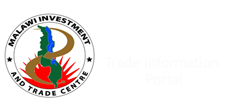Almost 70% of Africans make a living off agriculture and growth in the sector is eleven times more effective in reducing poverty than growth in any other. Development policy and private investment thus far have tended to focus on tangible assets: technology, mechanization, fertilizers, finance and infrastructure. Yet the visibility and predictability of the market is also an issue. In some cases, even after smallholders ramp up productivity, they are unable to find a market to sell to.
Yara CEO Svein Thore Holsther sets the scene by illustrating poor visibility in some of Africa’s markets. “Not too long ago I met with a farmer who used the right inputs, got the right results, only to realize that when he went to the market there was no market,” he says. “It’s heartbreaking to see farmers who invest in their crop but then find there isn’t a market for their additional production”. The solution, he argues, is to adopt a bird’s eye view. “I think we need to challenge ourselves to think holistically; to think systems rather than focusing on each individual business.” Indeed, supply and demand wavers through the idiosyncrasies of the market and all stakeholders in the value chain, from farmer to processor, have much to gain by formalizing the structures at play.
Connecting the dots
Yet this is easier said than done. Value chains are replete with a whole range of players and synthesizing the market is no easy feat. “There are a lot more open market trading situations and a lot of uncertainty and that is what causes the problems,” says Simon Winter, Executive Director, Syngenta Foundation. “The more you tighten up those contracts the better.”
Our approach is to work backwards from the buyer; work backwards from the large processors who market and sell the finished product. Kenya-based Diageo backed East African Breweries (EABL) – who gather mainly sorghum to produce beer – do exactly that. The brewers currently work with around 30,000 smallholder sorghum farmers in Kenya and invest along all stages of the supply chain. “On the large part we are still doing everything,” says Jean Kiarie Ngumo, Corporate Affairs & Sustainability specialist for EABL. “We will take care of the inputs we will take care of the financing; so we do everything.” This guarantees a set amount of raw material upon which the company can project each month.
But it costs. Although large producers build smallholder capacity to secure crop, they often face their own financial constraints and are by no means a silver bullet. Amar Ali, CEO of Africa Improved Foods, a relatively new company in Rwanda working to produce nutritious food, draws a limit on his company’s capacity. “We do work with our aggregators to provide them with some working capital and some support but it must be said; there are offtakers and then there are offtakers,” he says. “We are not a Heineken, a Diageo or a multinational so there’s only so much we can do.”
Ali explains how last season AIF lost 90% of their locally sourced crop due to post-harvest issues such as storage and transport facilities. In response, the company began to source the crop “from the cob” or in other words at the farmer gates. This reduced rejection rates down to around 25% and was supported by the farmers; no longer required to expend time and effort transporting goods to local markets. This was effective but as Ali points out, ultimately outside their remit. “That’s not what we really want to do,” he says. “We don’t want to become last mile aggregators. We are processors and sellers of processed foods.”
Working forward
Looking at the supply chain from another perspective, from the ground up, predictability of demand is a problem and lack thereof may negate the smallholders’ interest in finding an institutional buyer. This in turn provides little incentive for farmers to access finance and technologies in an attempt to scale up, thereby preventing smallholders from shouldering the burden that private sector players like EABL and AIF currently have to bear. Winter explains the importance of regular demand.
“When you have a predictable offtaker with a predictable demand every year, it’s much better because you now know exactly what you need. Unfortunately, the large volume of demand for staple crops is not predictable.” Predictability is therefore key and Winter points to the work of USAID and Techno Serve, among others, in tightening up regularity on the demand side.
Commodity exchanges are also a reliable marketplace for smallholder farmers offering predictable demand and price. They work a contract basis such as spot prices, forward prices, future contracts as well as options on future contracts. These contracts offer farmers stability and consistency of prices for their produce – in particular, future contracts which protect farmers against drops in prices. Many African countries have tried their hand at commodity exchanges since the South African Future Exchange led the way in the 1990s. While some have been successful, others not, their capacity to provide reliability to smallholder farmers should not go amiss.
Finally, organizations like the Farm to Market Alliance (FtMA) are working to strengthen smallholder capacity and guide farmers into stable selling relationships with buyers. FtMA encourages farmers to engage in contracts extending beyond one season. This stability in demand then facilitates access to finance and loans used for feeds, fertilizer and machinery. Indeed, if the smallholder can guarantee sales over a number of years, he or she will be more likely to expand and improve operations which would again lessen the strain on the private sector. Businesses are then able to buy more crop from more farmers and bring more participants into structured value chains. By working to strengthen supply chains backwards from the private sector and forwards from the smallholder all participants in the agri-value chain look set to gain.
Source: African Business


